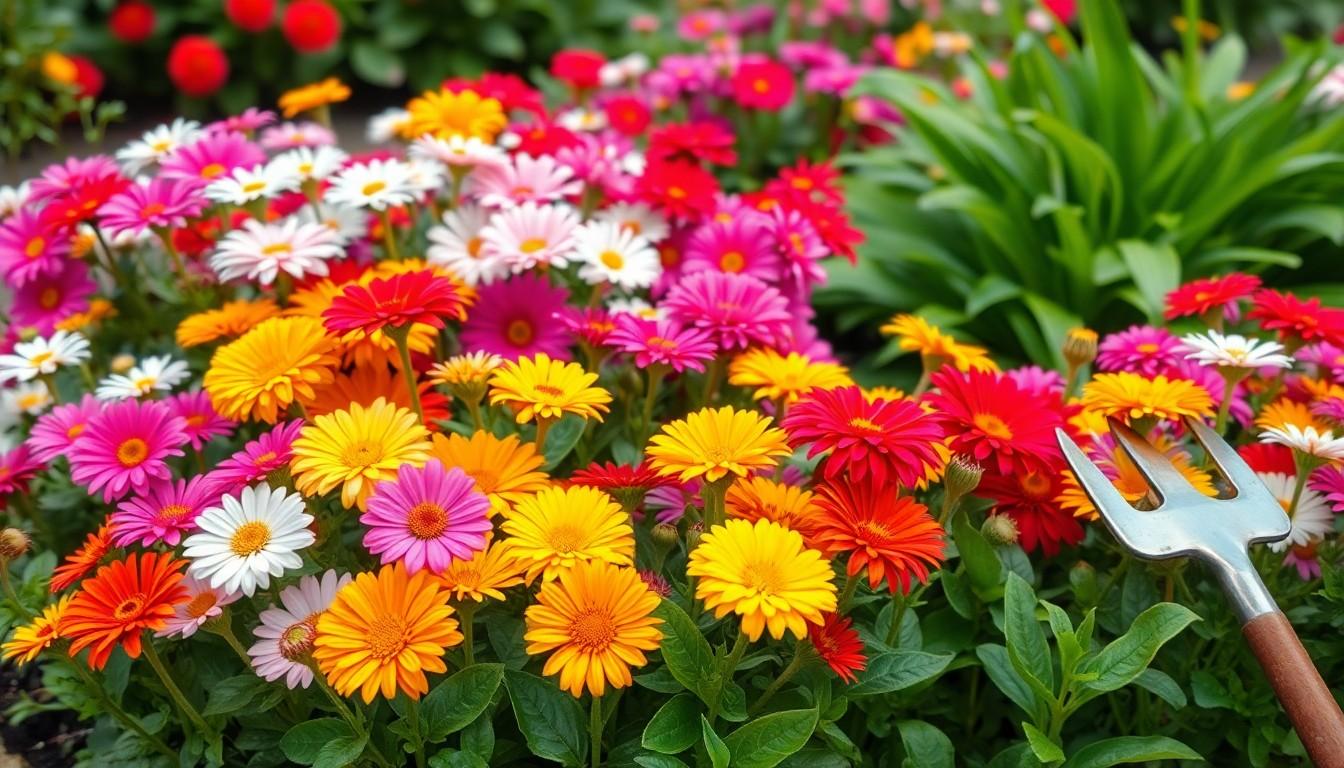Gardening can feel like a battle, especially when pesky weeds crash the party in flower beds. It’s a classic dilemma: how to kick those unwanted guests to the curb without sending your beloved blooms packing, too. Fear not, green thumbs! There’s a way to keep your garden thriving while declaring war on weeds.
Imagine strolling through your flower beds, admiring vibrant petals without the worry of a weed massacre lurking in the shadows. The secret lies in choosing the right weed killer that’s tough on weeds but gentle on flowers. With the right products and techniques, he can turn his garden into a weed-free paradise without sacrificing beauty. Let’s dig into the best options that’ll keep those weeds in check while letting your flowers flourish.
Overview Of Weed Killers
Weed killers are essential for maintaining flower beds while protecting delicate blooms. Various types of herbicides exist, each designed for specific uses and plant interactions. Selecting the right product can effectively combat weeds without damaging flowers.
Pre-emergent herbicides work by preventing weed seeds from germinating. Timing is crucial when applying these products, as they must be used before the weeds sprout. Flowering plants can flourish when these herbicides are applied according to label instructions.
Post-emergent herbicides tackle existing weeds. Choose selective options that specifically target weeds while leaving flowers unharmed. Certain brands utilize ingredients like clopyralid or corn gluten meal, providing effective weed control without side effects on flowers.
Natural weed killers offer an eco-friendly alternative. Vinegar and salt serve as popular homemade solutions, but they require careful application to avoid unintended damage to nearby flowers. Applying these solutions directly onto weeds minimizes the risk.
Another option includes mulching, which suppresses weed growth while preserving flower beds. Organic materials, such as wood chips or straw, can enhance aesthetics while blocking sunlight, preventing seeds from sprouting.
A thorough understanding of local flora assists in choosing compatible weed control. Researching flower species can inform decisions on herbicide use, ensuring optimal plant health.
Taking proactive measures can foster beautiful, healthy flower beds. Regular maintenance, such as weeding and mulching, complements the use of herbicides and promotes a thriving garden.
Types Of Weed Killers

Understanding the various types of weed killers helps in selecting the right option for flower beds. Options include chemical and organic solutions, each with unique properties.
Chemical Weed Killers
Chemical weed killers consist of synthetic herbicides designed to eliminate unwanted vegetation without harming desired plants. Selective herbicides specifically target broadleaf weeds while leaving grasses unharmed. Non-selective herbicides kill any plant they touch; care is necessary when applying them around flowers. Glyphosate and 2,4-D are commonly used chemicals in gardens. Applications may vary, with some requiring immediate absorption while others persist in the soil longer. Reading labels ensures proper use and safety precautions, as these chemicals can pose risks to beneficial insects.
Organic Weed Killers
Organic weed killers utilize natural ingredients to control weed growth in an eco-friendly manner. Vinegar serves as a popular choice, containing acetic acid that burns weeds on contact. Boiling water can also effectively kill weeds by cooking plant tissue. Corn gluten meal acts as a pre-emergent herbicide, preventing weed seed germination. Essential oils derived from plants like clove or cinnamon can provide effective weed management as well. Throughout the gardening season, organic herbicides offer safe, sustainable options that preserve the health of flower beds.
Factors To Consider When Choosing A Weed Killer
Selecting the right weed killer involves several important factors. Understanding these elements ensures a balance between maintaining flower health and effectively managing weed infestations.
Safety For Flowers
Prioritizing the safety of flowers is crucial when selecting a weed killer. Herbicides marketed as selective typically target specific weed types while sparing ornamental plants. Evaluating labels helps determine if a product is safe for flower beds. Many gardeners lean toward organic options that utilize natural ingredients, ensuring minimal risk to the blooms. Utilizing spot treatments can also enhance safety, allowing for precise application directly onto weeds without affecting nearby flowers.
Effectiveness Against Weeds
Evaluating the effectiveness of a weed killer ensures successful weed management. Chemical herbicides generally provide rapid results, making them popular among gardeners facing significant infestations. However, some may also prefer organic alternatives, which may take longer but offer thorough control with less environmental impact. It’s advisable to identify the specific weeds present in the garden, as certain products perform better against specific species. Overall, a blend of effectiveness and safety often leads to optimal outcomes in maintaining healthy, vibrant flower beds.
Best Weed Killers For Flower Beds That Won’t Kill Flowers
Selecting the right weed killer ensures flower beds remain vibrant while eliminating unwanted weeds. Here are some effective products to consider.
Product Reviews
- Preen Garden Weed Preventer: This pre-emergent herbicide prevents weeds before they sprout. It’s safe for use around established flowers, making it ideal for flower beds.
- Spectracide Weed Stop: This selective herbicide effectively targets broadleaf weeds and provides visible results within hours. Its formula ensures flower safety when applied as directed.
- Garden Safe Organic Weed and Grass Killer: Featuring natural ingredients, this product kills weeds on contact. It offers an eco-friendly alternative that poses no harm to surrounding flowers.
Comparison Of Features
| Product | Type | Active Ingredients | Target Weeds | Safe for Flowers |
|---|---|---|---|---|
| Preen Garden Weed Preventer | Pre-emergent | Corn gluten meal | Annual weeds | Yes |
| Spectracide Weed Stop | Post-emergent | 2,4-D, dicamba | Broadleaf weeds | Yes |
| Garden Safe Organic Weed Killer | Organic, contact | Vinegar, salt | Various weeds | Yes |
Each product excels in distinct areas, such as prevention and rapid action. The choice depends on specific garden needs, ensuring effective weed control without jeopardizing flowers.
Application Tips For Safe Use
Select an appropriate application time. Early morning or late afternoon minimizes sun exposure, which reduces the risk of damaging nearby flowers.
Read the product label carefully. Understanding specific instructions ensures safe application and effective results against unwanted weeds.
Use spot treatments when possible. This method reduces the likelihood of accidentally spraying flowers and focuses the herbicide directly on weeds.
Employ protective measures like garden shields or cardboard. These barriers can help shield flowers from drips and overspray during application.
Consider using a spray bottle for targeted areas. A handheld sprayer provides better control, allowing for precise application without harming surrounding plants.
Water the flower beds before applying herbicides. Adequate moisture helps prevent the weed killer from soaking into flower roots, protecting them from potential damage.
Monitor weather conditions. Avoid applying weed killers just before rainstorms to prevent runoff that could affect non-target plants.
Observe timing in relation to flowering plants. Allow at least two weeks between weed killer application and planting or introducing new flowers into the area.
Maintain a safe distance from flower beds while applying herbicides. Keeping a few feet from the flowers helps reduce the risk of incidental contact.
Plan regular maintenance routines. Regularly pulling weeds by hand and mulching can decrease reliance on herbicides, ensuring a healthier flower bed.
Implement organic alternatives as needed. Methods using vinegar or boiling water offer effective solutions to manage weeds without risking flower health.
Conclusion
Maintaining a weed-free flower bed doesn’t have to come at the expense of beautiful blooms. By carefully selecting the right weed killer and employing effective techniques, gardeners can keep their flower beds thriving. Whether opting for selective chemical herbicides or eco-friendly organic solutions, understanding the specific needs of the garden is key.
Regular maintenance practices like hand-pulling weeds and mulching can further enhance flower health while minimizing reliance on herbicides. With the right approach, it’s possible to create a vibrant garden that flourishes without the hassle of invasive weeds. Gardeners can enjoy their colorful displays knowing they’ve chosen safe and effective methods for weed control.

